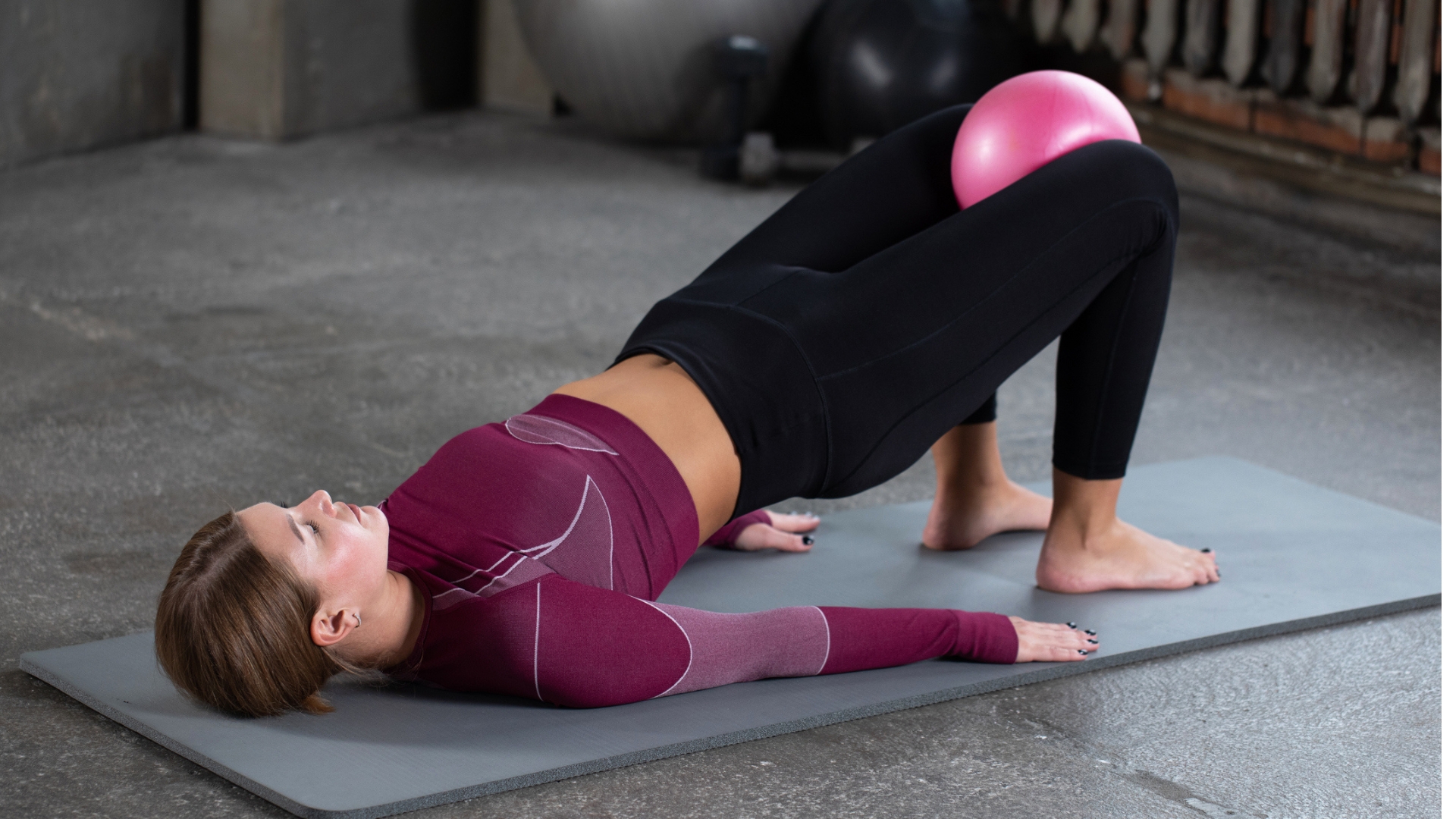I asked a fitness instructor for her top five pelvic floor strengthening exercises—here's what she recommends
All you need is a Pilates ball and these five moves

An earlier version of this article incorrectly labeled Claman as a Pilates instructor. Emily Claman is in fact a certified prenatal and postnatal fitness specialist and trainer. The article has been updated to reflect this.
If you're trying to strengthen your pelvic floor, you're probably already doing daily Kegels. But there are plenty of other ways to strengthen the muscles in this area.
I asked fitness instructor Emily Claman for her go-to pelvic floor exercises. Claman is a pre/ post-natal fitness specialist and the owner of Push prenatal and postnatal fitness studio, so she knows a thing or two about training these muscles.
She explained that the pelvic floor is part of your deep core, the muscles that support your torso and keep your organs in place. This means it’s involved in everyday movements even when you don’t realize it.
Here are the moves Claman recommends for targeting the area.
The moves
A post shared by PUSH (@pushppnft)
A photo posted by on
- Bridge and ball squeeze
- Adductor activation and ball balance
- Curtsey lunge and ball squeeze at chest
- Bear hover and ball squeeze
- Donkey kick and static hamstring squeeze
You may be familiar with some of these exercises, but the addition of the Pilates ball makes the pelvic floor muscles work harder.
Claman suggests using your breath to help deepen muscle engagement.
“On your exhale, feel the deep core and pelvic floor engaging to work together to support the movement,” she says.
Start your week with achievable workout ideas, health tips and wellbeing advice in your inbox.
Exercise explainers
1. Bridge and ball squeeze
Sets: 1-3 Reps: 15
- Lie on your back, feet hip-width apart with the ball between your inner thighs.
- Exhale, squeeze the ball and lift your hips into a bridge.
- Lower your hips back down and repeat to complete the repetitions.
Expert tip: You can place light weights on your hips for added resistance and an extra challenge.
2. Adductor activation and ball balance
Sets: 1-3 Reps: 15 each side
- Lie on your side with legs stacked and the ball in front of your hip.
- Rest your top leg on the ball, knee and hip bent at 90°.
- Extend your bottom leg straight in line with your hip.
- Exhale, lift your bottom leg a few inches off the floor, then slowly lower.
- Complete the repetitions on one side, then repeat on the other.
Expert tip: You can add ankle weights for added resistance and an extra challenge.
3. Curtsy lunge and ball squeeze at chest
Sets: 1-3 Reps: 15 each side
- Stand feet hip-width apart, holding the ball at your chest.
- Inhale, step one foot back and across behind you into a curtsy lunge.
- Exhale, squeeze the ball and return to the starting position.
- Complete all the repetitions on one side, then repeat on the other side.
4. Bear hover and ball squeeze
Sets: 1-3 Reps: 10
- From your hands and knees, with your hands under your shoulder and your knees under your hips, place the ball between your inner thighs.
- Exhale, squeeze the ball and lift your knees two to six inches off the floor.
- Inhale, slowly lower your knees back to the floor with control.
5. Donkey kick and static hamstring squeeze
Sets: 1-3 Reps: 15 each side
- From your hands and knees, with your hands under your shoulder and your knees under your hips, place the ball behind one knee, foot flexed.
- Exhale, squeeze the ball and press your heel upward.
- Inhale, lower your knee with control to tap the floor.
- Complete all the repetitions on one side, then repeat on the other.

Lou Mudge is a Health Writer at Future Plc, working across Fit&Well and Coach. She previously worked for Live Science, and regularly writes for Space.com and Pet's Radar. Based in Bath, UK, she has a passion for food, nutrition and health and is eager to demystify diet culture in order to make health and fitness accessible to everybody.
Multiple diagnoses in her early twenties sparked an interest in the gut-brain axis and the impact that diet and exercise can have on both physical and mental health. She was put on the FODMAP elimination diet during this time and learned to adapt recipes to fit these parameters, while retaining core flavors and textures, and now enjoys cooking for gut health.
You must confirm your public display name before commenting
Please logout and then login again, you will then be prompted to enter your display name.
